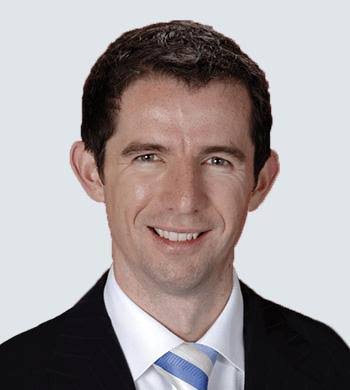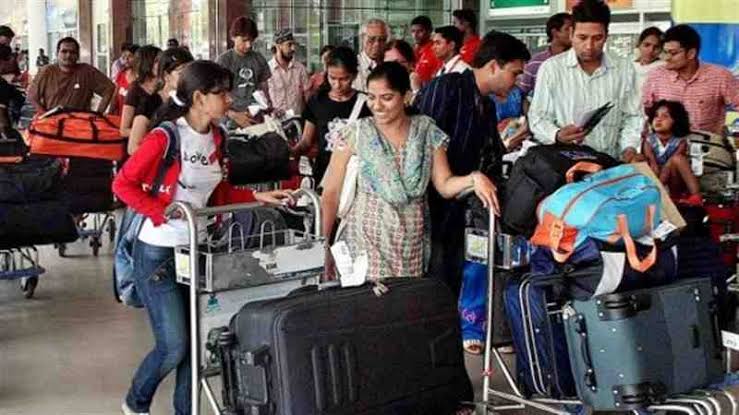Canberra, November 26: A new program launched today by the Morrison Government will assist Australian tourism operators across the country to provide tailored premium experiences for the Indian traveller.
Federal Tourism Minister Simon Birmingham said the India Host Program, developed in partnership with the Australian Tourism Export Council (ATEC), would help to drive continued growth from what is Australia’s fastest growing tourism market.
“With an estimated 70 million Indians set to travel overseas annually by 2035, we need to make sure Australia is well positioned to capitalise on the huge potential of this market,” Minister Birmingham said.
According to the government estimates, the number of Indian tourists travelling to Australia is expected to grow to nearly 1.2 million within the next decade, and could be worth over $9 billion each year to our economy.
The Government has partnered with ATEC to develop the national ‘India Host’ program, a tailored online resource that will help businesses around the country to better understand the types of tourism experiences Indian tourists are drawn to.

“We want to assist Australian tourism operators to better appeal to India’s young demographic and growing middle-class that is driving their desire for premium products and experiences”, the Tourism minister said.
This ‘India Host’ program by the Australian government will consist of five online webinar-style modules along with trade workshops around the country to ensure regional and city-based tourism businesses and operators can participate.
Earlier the Australian government allowed Indian travelers to be able to choose a Priority Consideration Service – a fast tracked visa service for a small fee. The service being priority, finalises your visa applications within 48 hours.
The service was made available to Indian travelers to Australia from December 5.
Also read: Fast Tracked – Indian visitor visa applicants can now avail the service
The timing of this initiative couldn’t be better with the T20 Cricket World Cup taking place in Australia next year which we know will be a huge drawcard for Indian tourists.
“By harnessing the excitement around this significant event, we hope to encourage more Indian travellers to venture beyond our major gateway cities and get out into our regions to experience some of our incredible tourism offerings” , the minister added.
“While we know Australia has some of the best experiences in the world we also know that more work can be done with our tourism operators to tailor these offerings to specific markets”, the minister concluded.
Why is the inbound Indian market so vitally important?
Indian visitors have improved their spending over the years… and more…
Over the last five years 2012-2017, India has significantly improved its ranking in terms of visitor spend – from 11th in 2012, to 7th in 2017. Over the five-year period, total spend has increased by 90%, leisure spend by 110% and holiday spend by 96%. However, on present data, India is low yielding relative to other markets and the government is hoping that to improve as the social trends in the travelling population changes.
In 2016–17, Indian visitors stayed around twice as long on average as the typical international visitor to Australia (56 days versus 34 days, respectively), but only spent 6% more during their visit. This equates to an average daily spend of $97 for Indian visitors, compared with $153 for all international visitors.
 This low level of spend is largely due to the fact that more than 40% of Indian visitors in 2016–17 were here for visiting friends and relatives. By its nature, they tend to record lower spend than that of other travel purposes, as visitors rely on their hosts for accommodation, food and travel costs; a cultural aspect related to the Indian travelers.
This low level of spend is largely due to the fact that more than 40% of Indian visitors in 2016–17 were here for visiting friends and relatives. By its nature, they tend to record lower spend than that of other travel purposes, as visitors rely on their hosts for accommodation, food and travel costs; a cultural aspect related to the Indian travelers.
In 2016–17, average daily spend among Indian travelers visiting friends and relatives, was only $32 – 79% less than that of other Indian visitors. Consequently, Indians coming to Australia for to visit friends and relatives, only accounted for 15% of total spend during this. That also explains why the largest group of Indian visitors by age were those 55 years and over (38%), followed by 30 to 44 year olds (24%), and those under 30 years of age (23%). The bigger spends by Indians visiting Australia is recorded by those who come for study – 37% and 20% by those who travel to holiday down under.
Almost 1 billion Indians of working age in 2031
India’s active working age population – the number of people aged 15-54 years formed around half of the total Indian population in 2011. This cohort is expected to be a strong driver of future growth in outbound tourism, and is forecast to reach 904 million by 2031 (or up 213 million people on 2011). Within that cohort, those aged 15-29, accounted for 48% and 30-54 accounted for 52% of the nation’s population.
That 904 million strong working age Indian population by 2031, projects very positively as outbound tourists from India – is the market, this initiative by the government is eyeing through this ‘India Host’ initiative.
In 2018, 357,700 Indian travelers to Australia accounted for $1.7 billion in spending while in Australia with just 357, 700 visitors, not even half a million. With projections of India’s working age population crossing 900 million in just 12 years, the numbers can do miracles for Australia.
And the government is getting ready to cash in on the boom inbound Indian market can deliver.
Similar Posts by The Author:
- BAPS temple vandalism critic Canadian MP Chandra Arya on Pannu’s radar
- Dutton asks Albanese to sack Andrew Giles
- Victorian Liberals and Nationals demand Royal Commission into CFMEU misconduct under Labor
- Peter Khalil welcomes more funding for emergency accommodation and support for women and children in Wills
- Dogged Vic government powering ahead with the Suburban Rail Loop

